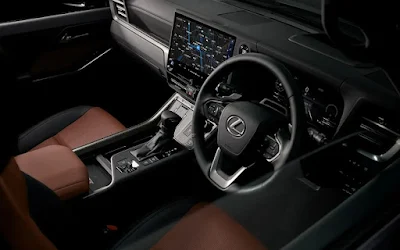For the first time ever, Suzuki has launched its first-ever EV, the e VITARA. So, what's it all about, the Suzuki e-VITARA?
 |
| 2026 Suzuki e VITARA |
Starting at 3,993,000 Japanese Yen plus additional costs, the Suzuki e VITARA is the company's first electric vehicle as it braces the electrification trend that most carmakers are embracing in this unstable era we live in. It goes without saying that this is the fourth time Suzuki has imported this from India's Maruti Suzuki production line. Long before its arrival, the currently available India-made Suzukis sold in Japan are the Fronx and the 5-door Jimny Nomade.
 |
| 2026 Suzuki e VITARA |
 |
| 2026 Suzuki e VITARA interior |
Beginning with the styling, the e VITARA draws inspiration from the eVX Concept, albeit with some notable differences. Yes, the back and the sidelines mimic the concept's looks; the front face didn't adopt the eVX's front and went for a front similar to a certain not-for-Japan Toyota SUV from a long time ago. Long story short, but you have to give credit to the design team for such a simple but rugged look.
Inside, the e VITARA's dashboard bears an auspiciously similar appearance to the pre-facelifted Kia Sorento MQ4 of 2020. Appearances aside, the driver's side is packed with ambient lighting with multi-color illumination, a 26.04cm multi-information display that combines the virtual instrumental panel and the touch-screen sat-nav system, a twin deck floating console with Shift-by-Wire, and a wireless charger, among others. On the passenger side, because it's bigger than a Daihatsu Rocky, the boot space is a default 310 liters with the rear seats present and up to 1052 liters with all passenger seats folded.
 |
| 2026 Suzuki e VITARA |
Running on a newly developed HEARTECT-e platform made exclusively for BEVs, the e VITARA offers two battery packs. The entry-level front-wheel-drive X variant is equipped with a 49kWh LFP battery that produces 144PS of power, 193Nm of torque, and up to 433km of driving range. The range-topping 4WD Z variant features a 61kWh LFP battery and an extra electric motor, producing 184PS of power, 307Nm of torque, and 472km of driving range, although the FF Z variant with the said battery minus the extra motor can do it in 520km.
Bringing common sense to its drivability, the e VITARA comes with Rack & Pinion Power Steering, front MacPherson struts, rear multilink suspension, and ventilated disc brakes. It behaves normally as a front-wheel-drive variant, but with the ALLGRIP-e for the 4WD Z variant, it performs like a beast, just as the Indians said upon experiencing it firsthand. As for safety, Level 2 ADAS features are present as well as familiar safety features such as high tensile steel strength, tire pressure monitoring system, 360-view camera, parking sensors, electronic parking brake, and brake hold.
From concept turned reality, the e VITARA is all about its polyhedral muscular stance, futuristic and spacious cabin, it performs like a beast, and safety beyond imagination. This is what Suzuki's first EV sums up, but can it keep up against Toyota's first EV, the bZ4X?
 |
| 2026 Toyota bZ4X |
Formely a lease-only car that you can still rent via the KINTO subscription service, the new Toyota bZ4X is now ripe for private ownership, starting at 4,800,000 Japanese Yen plus additional costs.
 |
| 2026 Toyota bZ4X |
 |
| 2026 Toyota bZ4X interior |
The facelifted bZ4X is now officially available for ownership, although you can still lease one via KINTO if you want.
While the exterior design's been revised to keep it fresh for its potential owners, it's the new interior layout that makes a statement. Pity that Toyota canned the option to have a yoke in it (boo...), but amid the dashboard changes, the boot space is still good for 452 liters with the rear seats present.
The EV powertrain gets a shakeup for the recent facelift. The entry-level G model features a 58kWh Lithium battery packing 167PS of power and 544km. The front-wheel-drive Z, meanwhile, features a 73kWh battery with 224PS of power and 687km of driving range. The alpha of the range is the 4WD Z lineup with the same 73kWh battery but with an extra electric motor, producing a powerful 342PS and 687km of driving range.
The shakeup of the bZ4X's powertrain is thanks to its new eAxle with silicon carbide semiconductors for greater efficiency and higher power while also being lighter and more compact.
For a car that weighs over two tons, the bZ4X behaves like a normal crossover on a daily basis thanks to its Rack and Pinion steering, front struts, rear double wishbones, and ventilated disc brakes. It's not an enjoyable ride as expected, but it feels nice to drive and downright as regular as a regular show.
In terms of safety, the bZ4X is packed with safety features such as Pre-Crash Safety, Blind Spot Monitor, and Toyota Teammate Advanced Park, among many others.
To get the most out of the new bZ4X, this car is qualified for TEEMO, a new charging service that begins at Toyota and Lexus dealerships with a rich network Japan-wide. No admission fee is required, and the monthly basic fee is free. The required cost is only for the time you actually use it, so there is no charge for the month you do not use TEEMO. The TEEMO service is not limited only to Toyota and Lexus EVs like the new bZ4X but also to EVs from most manufacturers. In addition, TEEMO members can also use e-Mobility Power-linked chargers across Japan.
So, which one would you choose? The first-ever Suzuki e VITARA for its reasonable price and sizing, or the updated Toyota bZ4X that poses greater value and user-friendliness? Can't say which, but if it's value you want, it's the Suzuki e VITARA, but if you want everything for an EV crossover, go stick with the Toyota bZ4X that you can now fully own.
Photo: Suzuki Motor Corporation/Toyota Motor Corporation

























































